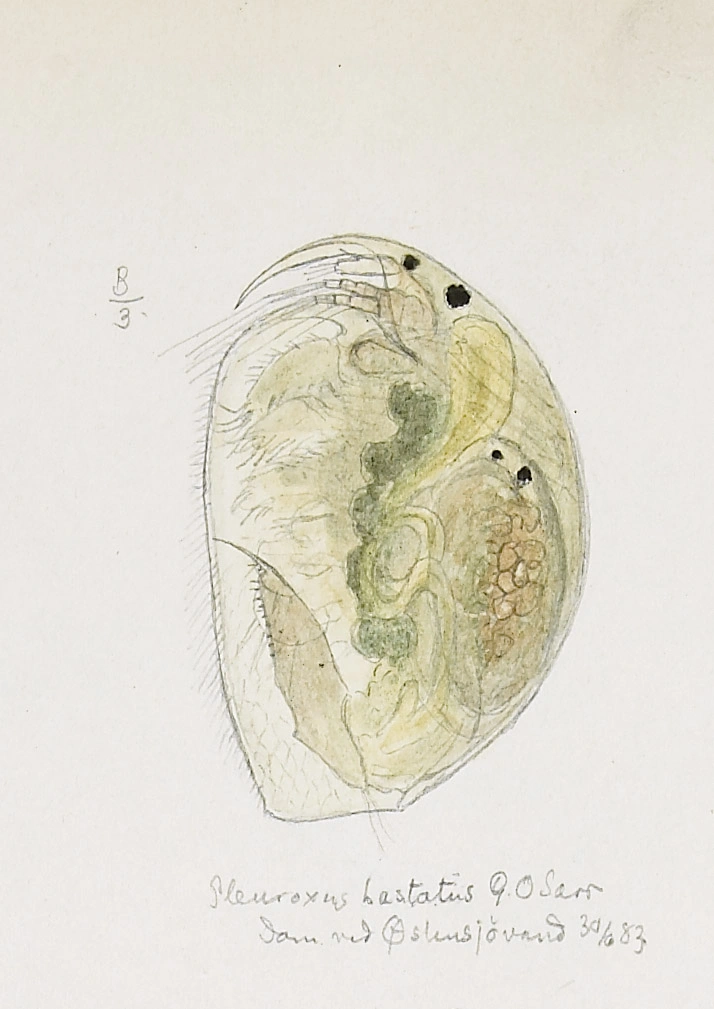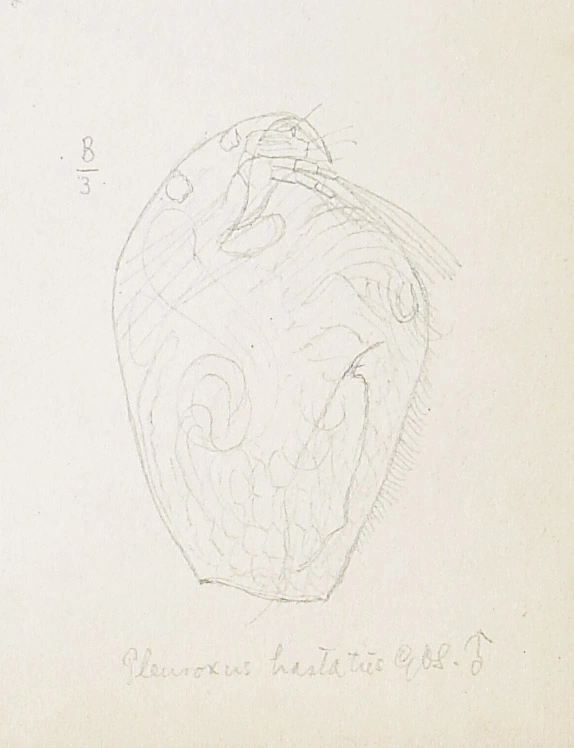Pleuroxus laevis
Pleuroxus laevis is characterized by the shape of the postabdomen which is dark brown, slender and tapering strongly towards the end. Though it is found in almost all parts of the country, it may be defined as an easterner.
Key characteristics
Pleuroxus laevis (female)
Pleuroxus laevis (male)
Seen from the side, Pleuroxus laevis is oval and comparatively much slimmer than other species belonging to the genus Pleuroxus. Its rostrum is long and bends sharply posteriorly to the level of the tip of the first pair of antennae. The shape of the postabdomen is also different being slender and tapering strongly towards the end. Close to the posterior end there are two relatively long and thin spicules which make a contrast to the small spicules (about 10) anteriorly on the postabdomen. Its colour varies between yellow and brown, while abdomen is dark brown.
Female: Length 0.5–0.7 mm
Male: Length 0.4–0.5 mm
Ecology and distribution
Pleuroxus laevis is a littoral species recorded from more than 3 % of the water bodies examined in Norway, mainly situated in the central parts of South Norway. The species has also been found in the far north (Troms county). The locations containing P. laevis are of varying sizes and situated between sea level and timberline. It is found both in vegetation and on muddy bottom. pH is varying between 4.3 and 7.9 with the majority of records from water bodies having pH>5.5. Conductivity is varying between 0.8 and 45 mS/m.
| Vitenskapelig navn | < 4,5 | 4,5 - 4,9 | 5,0 - 5,4 | 5,5 - 5,9 | 6,0 - 6,4 | 6,5 - 7,0 | 7,0 - 7,4 | > 7,5 |
|---|---|---|---|---|---|---|---|---|
| 2 | 0,4 | 1,5 | 3 | 4,3 | 4,9 | 5,8 | 4 |
| Vitenskapelig navn | < 1,0 | 1,0 - 1,4 | 1,5 - 1,9 | 2,0 - 2,9 | 3,0 - 3,9 | 4,0 - 4,9 | 5,0 - 6,9 | 7,0 - 9,9 | > 10,0 |
|---|---|---|---|---|---|---|---|---|---|
| 0,4 | 0 | 2,8 | 2,7 | 2,1 | 4,3 | 6,5 | 8,3 | 8,8 |
| Vitenskapelig navn | < 0,01 | 0,01 - 0,09 | 0,1 - 0,9 | 1,0 - 9,9 | 10,0 - 99 | 100 - 999 | > 1000 |
|---|---|---|---|---|---|---|---|
| 8,8 | 4 | 4,5 | 4,1 | 1,1 | 2,9 | 8,7 |
| Vitenskapelig navn | < 100 | 100-299 | 300-499 | 500-699 | 700-999 | >1000 |
|---|---|---|---|---|---|---|
| 3,2 | 6,1 | 4,1 | 2,1 | 0,6 | 0 |

